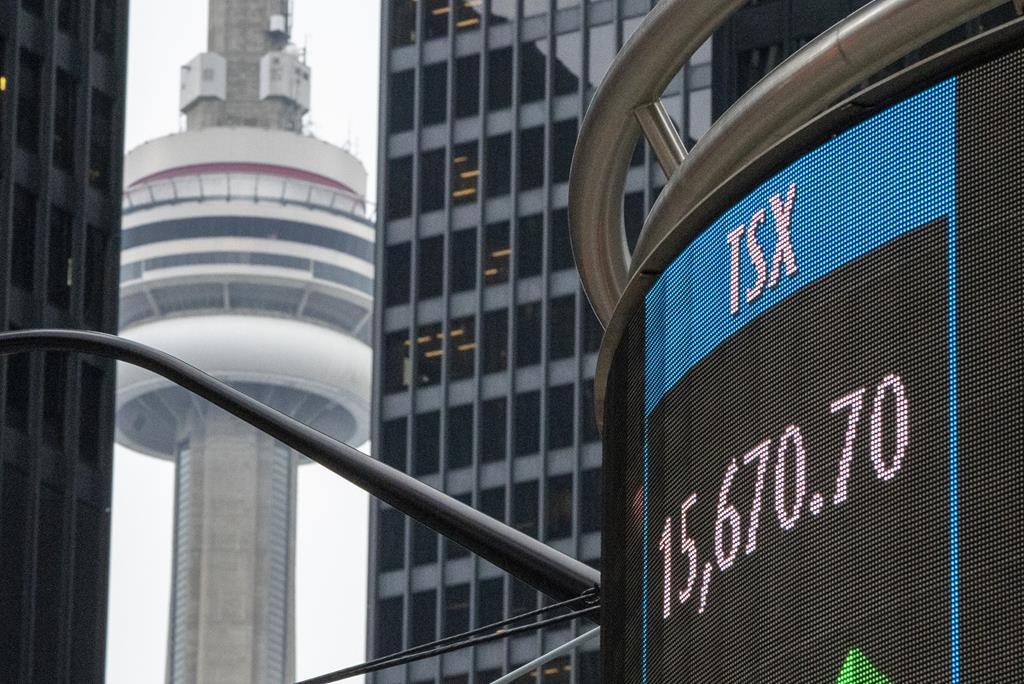North American markets ended the trading day in the red, with Canada’s main stock index down more than 150 points and U.S. stock markets also lower.

The S&P/TSX composite index was down 165.98 points at 19,560.16, driven by losses in the energy sector as the price of oil fell.
Oil retreated as fears of a pronounced global slowdown and its potential impacts on global energy demand worsened.
In New York, the Dow Jones industrial average was down 173.27 points at 30,961.82. The S&P 500 index was down 44.66 points at 3,901.35, while the Nasdaq composite was down 167.32 points at 11,552.36.
U.S. markets fell even as retail sales data came in stronger than expected and jobless claims declined for a fifth week.
“While the reports provided an upbeat assessment for the U.S. economy, they also indicate that policymakers have more work to do in order to cool the economy and curb inflation,” said Candice Bangsund, portfolio manager at Fiera Capital.
Bond markets also came under pressure as investors ramped up their wagers for a more aggressive U.S. Federal Reserve next week, which sent bond yields higher and prices lower on the day.
It is widely expected that the central bank will hike its key interest rate three-quarters of a percentage point at its upcoming meeting, but odds of a full percentage point hike have been increasing after the latest reading on inflation disappointed traders Tuesday.
“Looking forward, stock markets remain vulnerable to further volatility and downside as investors assess valuations in light of more monetary policy tightening to come as well as the impacts on growth and earnings,” Bangsund said.
Central banks’ unwavering commitment to reining in inflation will ultimately limit equity gains, Bangsund also said.
“We expect another down-leg in this bear market, driven by the earnings side of the equation,” she added.
“Earnings expectations haven’t yet adjusted to reflect the looming risk of recession or even an economic slowdown, and material downgrades could set the stage for the next leg of this bear market.”
Bond markets are also susceptible to further losses, with central bank tightening, stubbornly elevated inflation, and quantitative tightening likely to put upward pressure on bond yields, according to Bangsund.
She said a traditional 60/40 portfolio is unlikely to meet investor objectives given lower returns for public equities, while traditional bonds may no longer serve as a shock-absorber.
“As such, a well-balanced portfolio will need to include higher allocations to private market asset classes such as private credit and real assets to compensate for these shortfalls in the public markets space,” she said.
The October crude contract was down US$3.38 at US$85.10 per barrel and the October natural gas contract was down 79 cents at US$8.32 per mmBTU.
The December gold contract was down US$31.80 at US$1,677.30 an ounce and the December copper contract was down three cents at US$3.49 a pound.
The Canadian dollar traded for 75.76 cents US compared with 75.95 cents US on Wednesday.



Comments